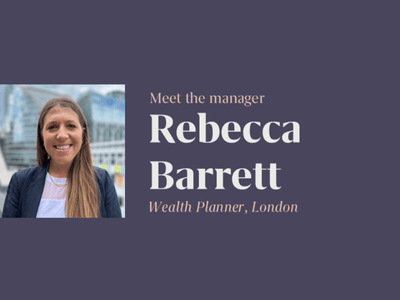The start of 2022 feels very like the start of 2021 with restrictions in place across many parts of the world and governments desperately racing to vaccinate or boost their populations in the face of Omicron. The key economic difference today and, one of the main risks for investors this year, is inflation which is much higher and set to go higher still in the short term. Input costs for businesses are rising consequently and the challenge of passing through these extra costs to consumers will become harder. Coupled with the ‘cost of living crisis’ that is impacting consumers, it is evident that profit margins for businesses will be harder to sustain.
I am working on the basis that inflation and interest rates will end the year slightly higher than the current market forecasts, which may lead to some weakness throughout 2022. To date, bond and equity markets have been sanguine to higher inflation but it makes the margin for error much smaller for central banks to avoid making a policy mistake. Much will depend on the length of time Omicron’s impact has on demand and supply chain issues. Anecdotally, many companies have told us to expect supply and demand not to balance out until at least 2023, which supports the view that inflation will be a headwind for longer.
After the strong performance in global stock markets seen over the last few years I am forecasting a harder year for investors this year. As mentioned, profit margins are looking under threat and valuations do not leave much room for disappointment. I am however still optimistic for the medium and longer term and so I’m not advocating a significant switch out of equities into more defensive assets. Indeed, I have taken some action already to add some ballast on portfolios through 2021.
In the context of the above macro views, equities remain the asset class that should provide returns ahead of inflation over the longer term for investors and adding more exposure to assets less correlated to equity markets would provide greater diversification. I have looked to build up and will continue to add, where relevant, to the ‘Alternatives’ element of portfolios, which includes property logistics businesses, infrastructure funds, multi-asset funds and some gold exposure too. Any allocation to alternative assets is designed to have lower volatility, often with income that is steady and, in most cases, inflation-linked. I will look to retain a low exposure to bonds and only hold inflation-linked bonds and those bond funds that can protect us against higher interest rates, where appropriate for the client’s investment objective. Cash remains unattractive to hold given the higher inflation outlook and the lack of interest still paid on deposits.
Even with the short term caution we currently have, I am generally continuing to manage portfolios with a longer term investment horizon, where appropriate, so will be looking to retain our exposure to structural growth themes that we see as being strengthened by the events of the last two years. Disruptive technology, clean energy, automation, biotechnology, digital infrastructure and health and wellness are some examples of these themes. I am not minded to re-introduce significant exposure to a number of ‘old economy’ sectors that dominate the FTSE 100, given prospects for growth and income generation look much less attractive today than they once did.
Freddy Colquhoun, Investment Director
The value of securities may go down as well as up and you may not receive back all the money you invest. Past performance is not a reliable indicator of future results. The views expressed are those of the author.




